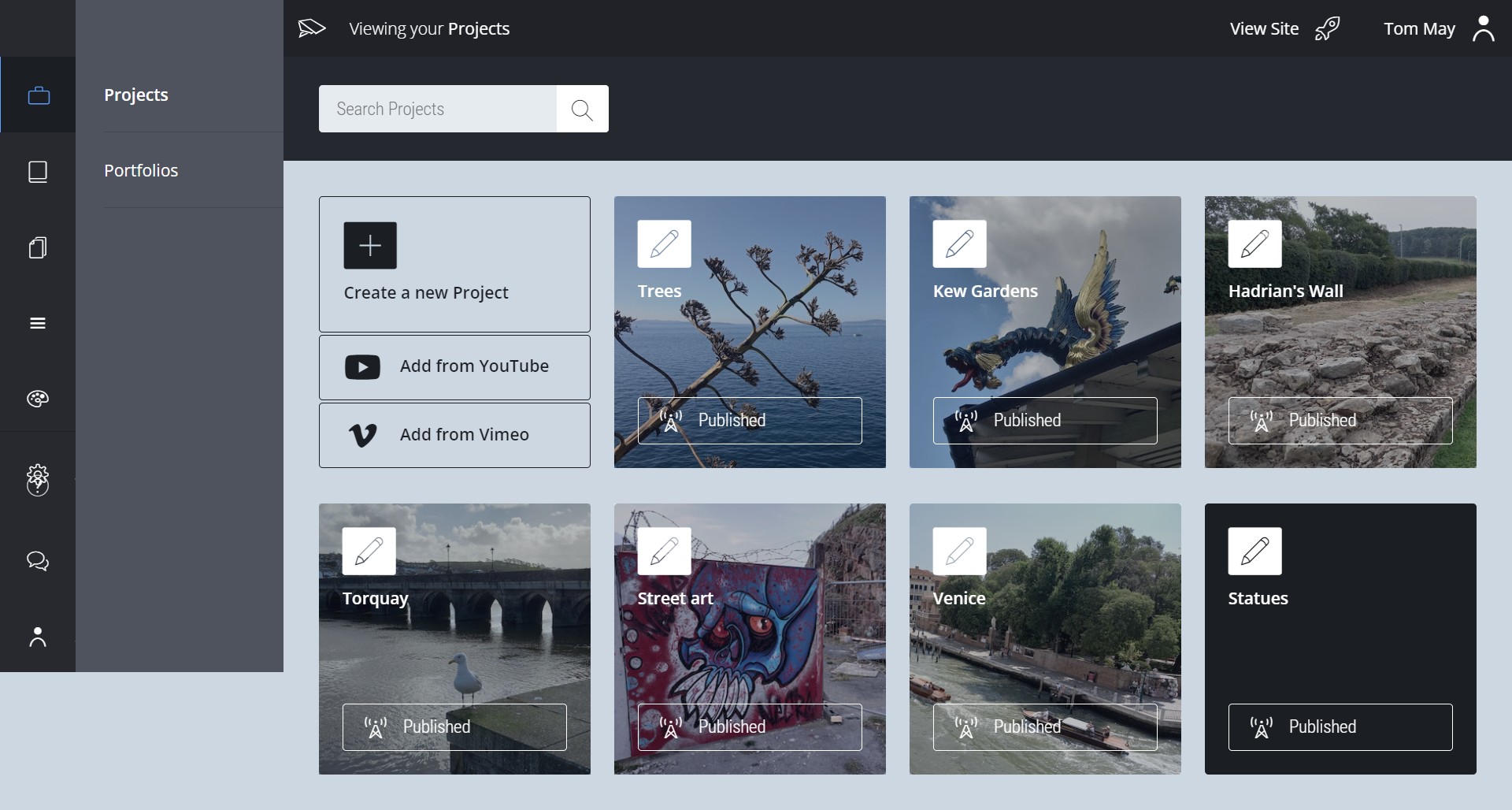Our Verdict
If you have some strong and eye-catching images that you want to put together in a portfolio site, Fabrik is a great choice. You'll have to spend five minutes watching a tutorial video first, but once you've got your head around Fabrik's way of doing things, its interface becomes very easy to use. Top features include being able to password-protect projects, and automatic video uploads from YouTube and Vimeo.
For
- Easy to use
- Auto-upload from YouTube
- Password protect projects
Against
- Only suitable for portfolio websites
- No phone or email support
Why you can trust Creative Bloq
In this Fabrik review, I'll take a fresh look at this website builder for 2022. Creative Bloq first reviewed it in 2016, but it's evolved a lot over the years. So it seemed like a good time to check whether Fabrik still meets the needs of creative professionals.
Fabrik is known as one of the best website builders for photographers. But unlike competitors like SmugMug, Format and Pixpa, that's not the only discipline it targets. Fabrik is also aimed at filmmakers, artists, designers, illustrators, 3D, CGI and VFX artists, agencies, stylists and models. So pretty much everyone who reads Creative Bloq on a regular basis, then.
What these people have in common is the need for a portfolio website to show off their work. And that's specifically what Fabrik is focused on. So if you want to do anything else, such as sell products and services, or share your process and case studies in a more involved way, you should probably look elsewhere (start with our more general guide to the best website builders.)
If, however, you have a selection of strong and eye-catching images, and you want a clean and uncluttered portfolio site to show them off, Fabrik is for you. You can also add a blog, if you want to keep people updated about your latest projects and other news.
Read on to find out how much Fabrik costs, what it has to offer, and what it's like to use in practice.
Fabrik review: Plans and pricing
Fabrik offers a 14-day free trial and then you have to subscribe to one of three tiers. The cheapest level is Personal, and costs $9.17 / £6.75 per month billed yearly, or $11 / £8.50 billed monthly. This gives you 2GB media storage overall and allows you to upload 50 projects, 10 portfolios and unlimited blog posts.
The next level up is Professional, which costs $13.34 / £10 per month billed yearly, or $16 / £12.50 billed monthly. This gives you 5GB media storage overall and allows you to upload 100 projects, 20 portfolios and unlimited blog posts.
The most expensive option is Unlimited, which costs $21.67 / £16.67 per month billed yearly, or $26 / £20.50 billed monthly. This gives you unlimited storage and allows you to upload unlimited projects, portfolios and blog posts.
Fabrik review: Getting started

Signing up for a 14-day free trial of Fabrik is easy: you just need to give them your email and create a password. There's no need to supply credit card information or any other details. You then have to choose one of a selection of templates; but don't worry, you can easily change this later. Then you can start uploading your work and filling up your portfolio with content.
This seemed so simple, and the interface so straightforward, that I figured I could dive straight in. However, after 10 minutes of faffing about, I was getting nowhere. The system wasn't doing what I thought it should, so I figured it was best I watched the six-minute introductory video, 'Adding Your Work'.
This explained everything perfectly. What had been tripping me up was Fabrik's wording, which distinguishes between 'Projects' (for example, '2021 photos of my cat') and 'Portfolios' (collections of projects; for example, 'All my cat photos'). Once I'd got my head around that, everything became clear, and I didn't need to watch any of the other videos; I just worked it out myself.
Fabrik review: Interface
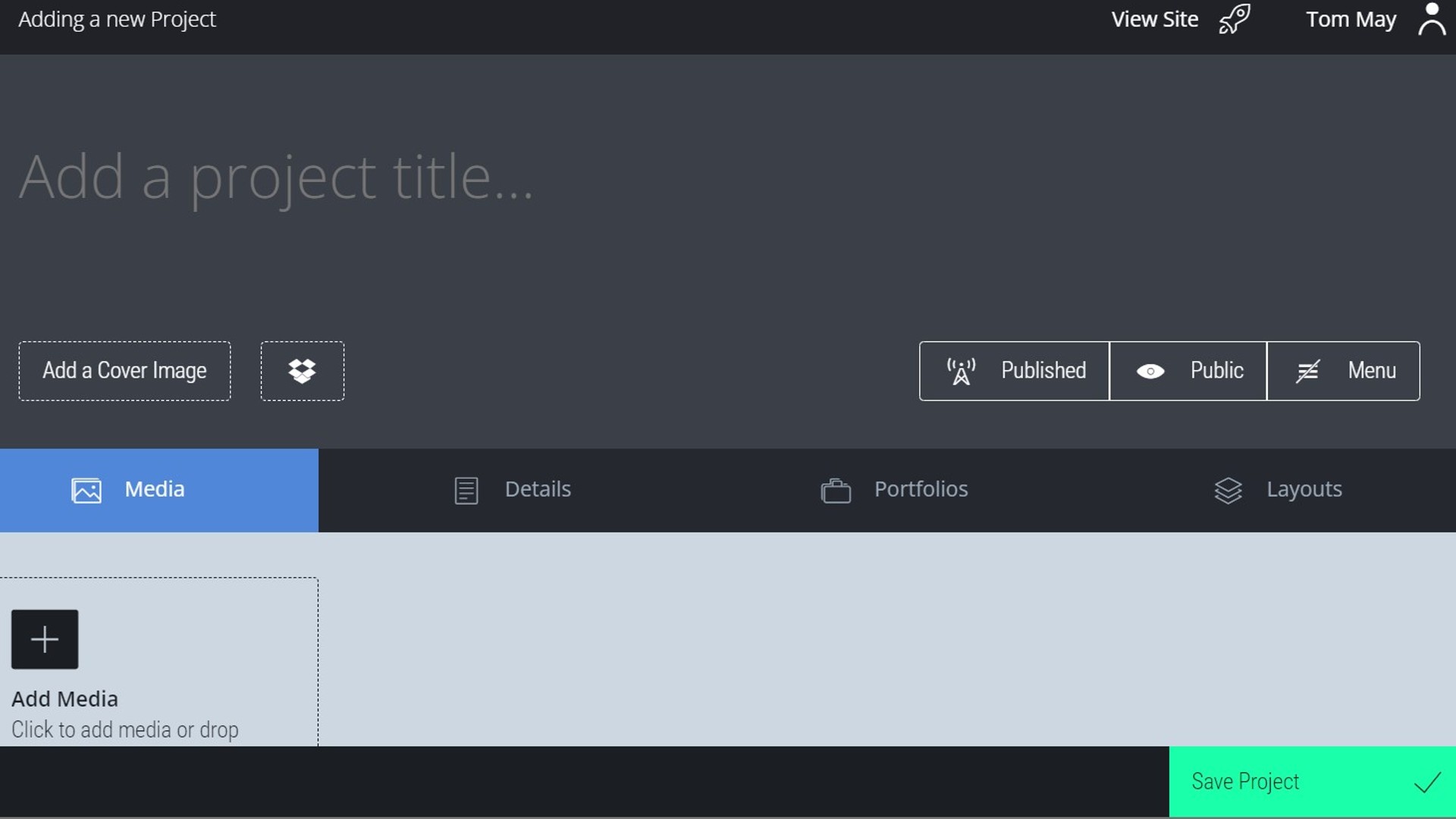
Once I understood Fabrik's way of doing things, I found its interface to be super-clear and self-explanatory. As I already had a bunch of images in folders on my computer, I found myself uploading content very quickly.
I loved how clicking on the 'View Site' button at the top shows you what the site you're building looks like at any given time. For me, using a Windows 11 laptop with a decent broadband connection, this happened instantaneously, which really made the process of building a site fast and fun.
Fabrik made it simple to add text and captions where I needed to, but didn't stand in my way when I was happy for the image to speak for itself. SEO elements like meta title, meta description and keywords were also easy to add, whereas I've find that more difficult using some web builders, such as IONOS.
In short, Fabrik's interface gets top marks from me: simple, intuitive, clear, uncluttered and logical throughout. In particular, I've never seen a web builder make it so easy to redirect visitors to your new site from an old one.
Fabrik review: Special features
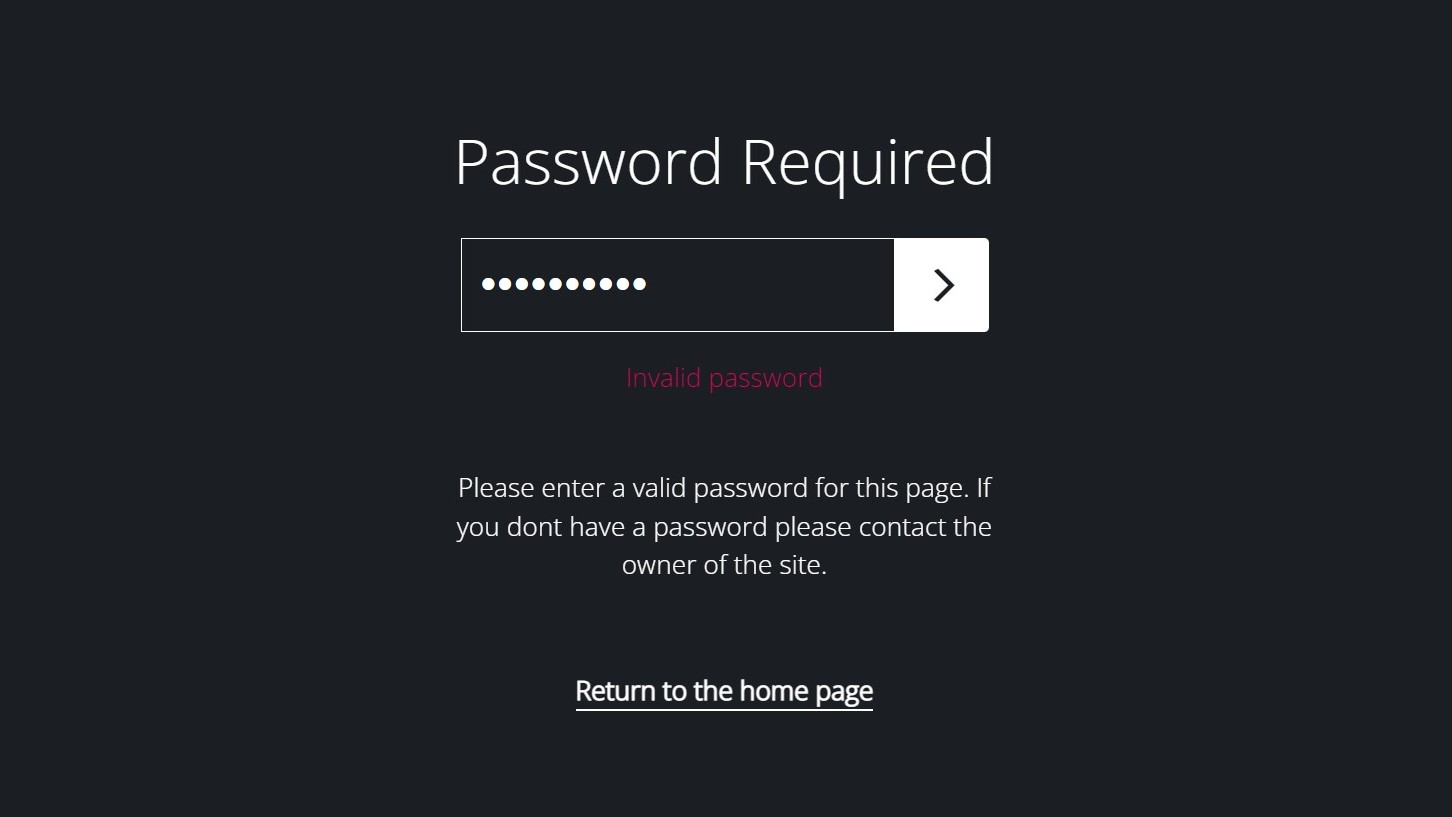
Fabrik offers all the features you need to build a basic portfolio site, and some extra ones that help it stand apart. Most notably for creative professionals, this includes the ability to password-protect certain content. That means you can share work with clients you don't want a general audience to see, such as during a pitch process.
All you need do is share a URL and the password, and it's very easy to set up. More generally, you can also toggle your images from private to public. Note, though, that you cannot password-protect your entire site.
If you have YouTube or Vimeo videos to add to your portfolio, Fabrik has another neat trick up its sleeve. As well as uploading them one by one, you can also connect your entire account. That way, each time you upload something to YouTube or Vimeo, it automatically gets pulled into your Fabrik site.
That's smart, and potentially a huge time-saver. You can also use Wistia, Wiredrive or Slate if you prefer. Note, though, that uploading videos directly from your computer to Fabrik isn't possible.
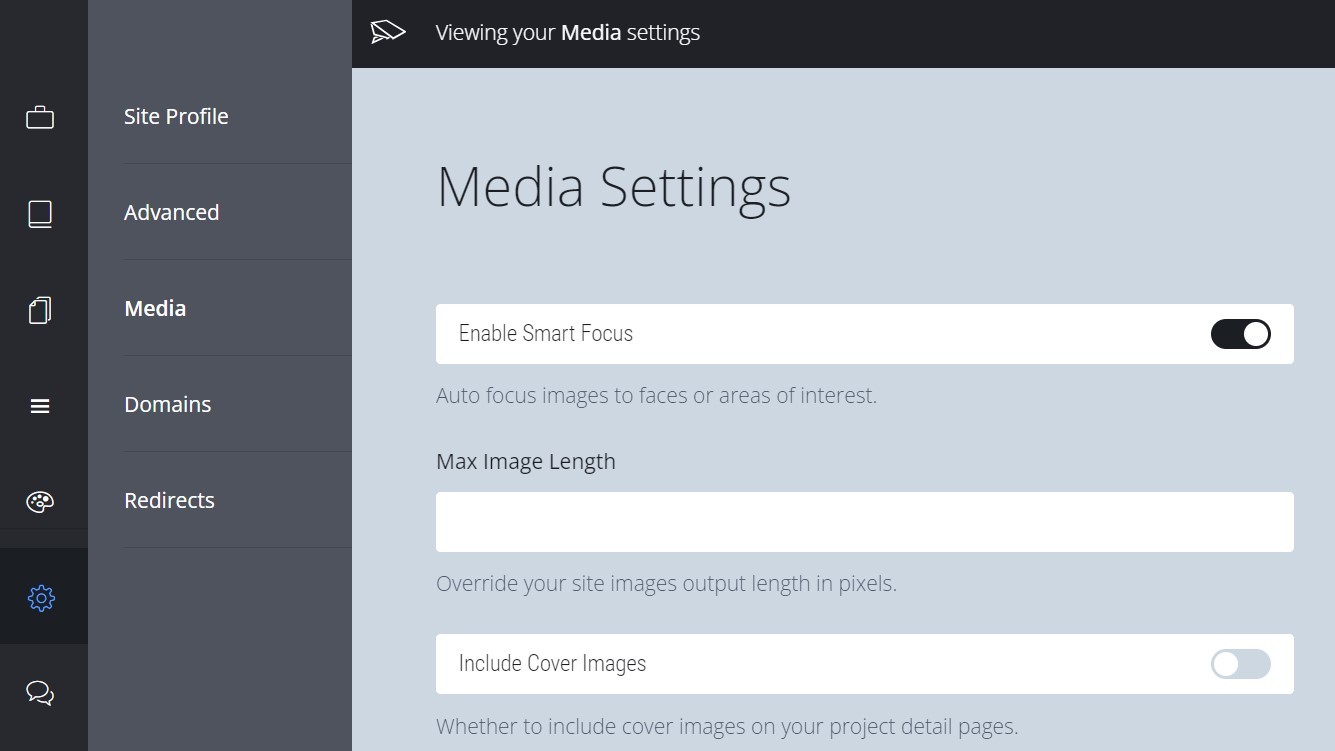
Thirdly, there's smart focus, which automatically crops images to focus on the most interesting parts such as faces, strong colours or objects. This works quite well in practice, although it can be a little unsettling if you don't know it's happening. The feature is enabled by default, so if you don't want it, you'll need to dive into the settings (under Media) to switch it off.
A final standout feature is the amount of organisational flexibility. For instance, as well as being able to group individual projects into portfolios, you can group them into sub-portfolios too. We also love that projects can appear in more than one portfolio. In short, however you want to organise your images, Fabrik seems to have you covered.
Fabrik review: Themes and customisation
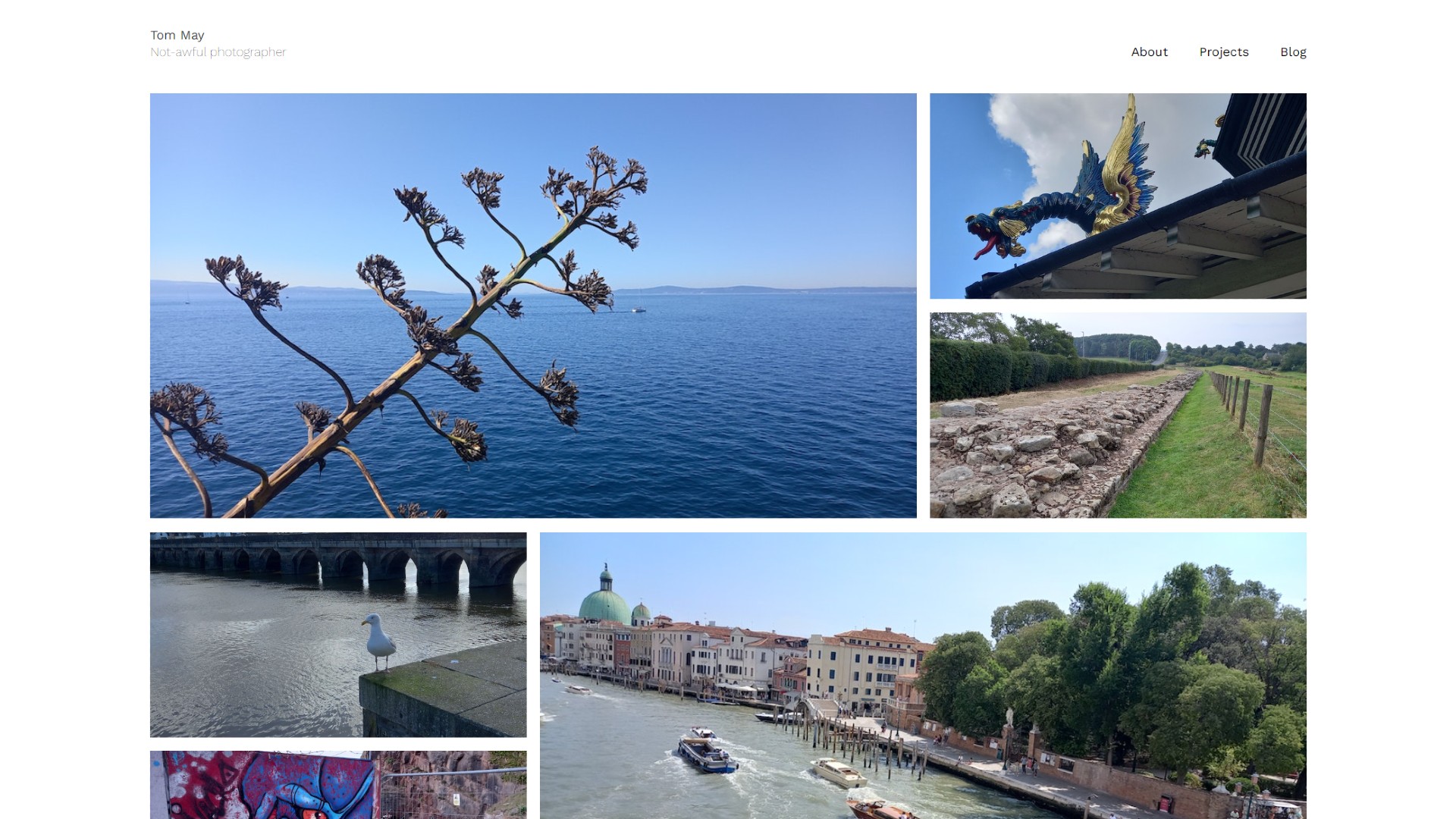
Fabrik's themes are pretty bog-standard, which could be seen as either a pro or a con, depending on your view. Squarespace's themes, in comparison, are much more beautiful, but getting them to work with your images requires more work. With Fabrik's simple, grid-based layouts, you can't really go wrong.
Plus, if you do want to change things up, the interface makes it very easy to do so. Each theme offers several possible layouts for each section (homepage, projects, portfolios and blog), and you can toggle between them without having to upload your images again. Or you can just try a different theme. Each theme offers eight options of colour swatches, too.
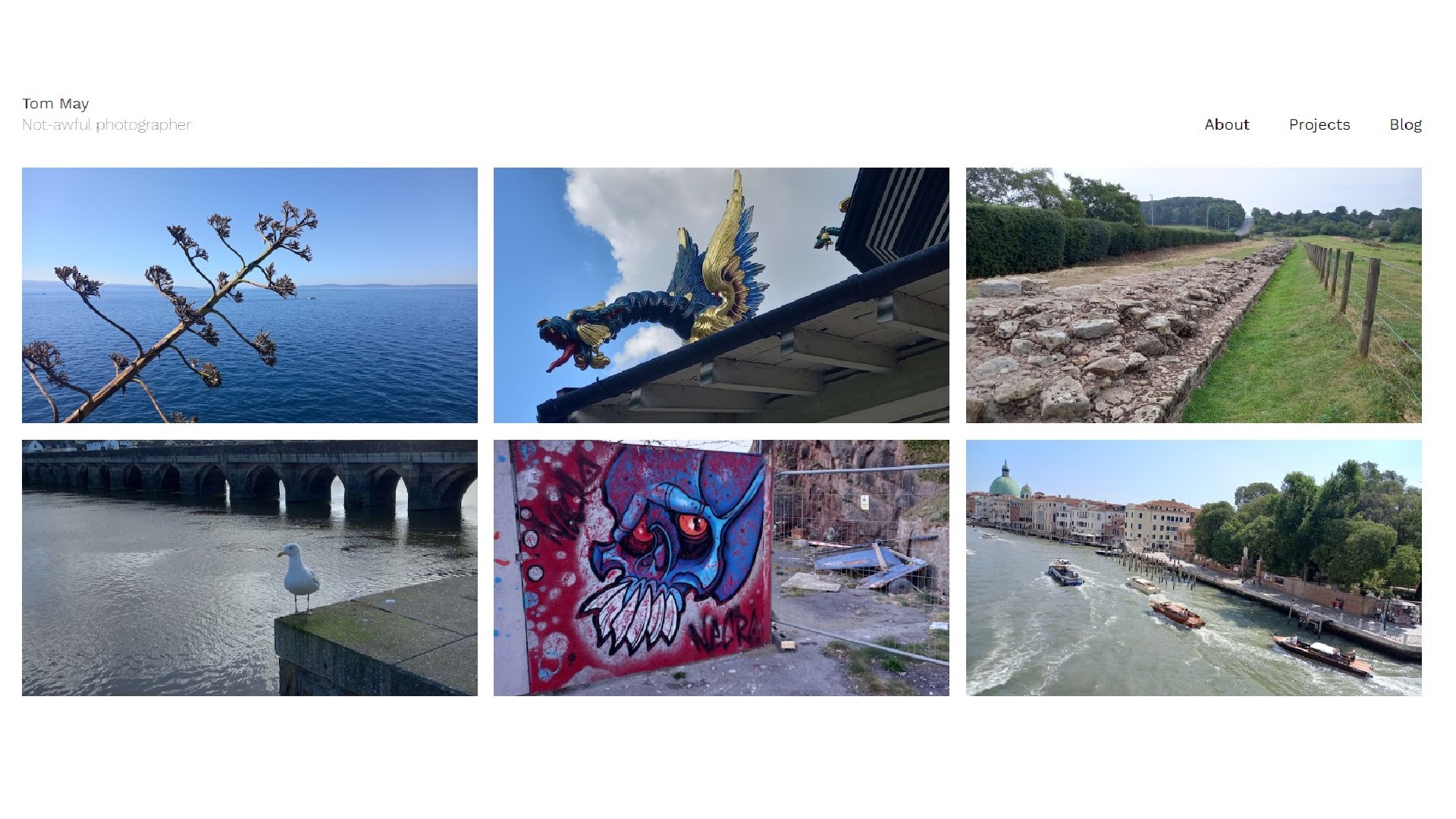
You can tweak your site's typography as well, selecting from either Google fonts, Adobe Typekit fonts, or your own font purchases. Plus you can add a logo, social icons, change the background colour, and more. All these customisation options can be found, straightforwardly enough, in the 'Customisation' menu item.
This type of customisation doesn't go as far as some web builders, such as those based on WordPress, such as Bluehost, or that let you tweak the code, like Voog. But if you're just interested in building a standard portfolio site, and letting your work speak for itself, you'll probably find that everything you want to tweak, can be tweaked here.
Fabrik review: Customer support
Fabrik's customer support comes via live chat. The team aims to answer queries within 30 minutes. In my case, I sent several messages (without mentioning I was writing for Creative Bloq), and each time got replies within a couple of minutes. Admittedly, the first response was automated, pointing me to an article that wasn't helpful, but at the same time, I was given the choice to 'Talk to a human' instead, and once I'd chosen that, everything was good.
Note, though, Fabrik does not offer email or phone support, and the live chat support is only available during 8am-6pm UK time. If you're in Asia, Australasia or the West Coast of America, then, that could be an issue.
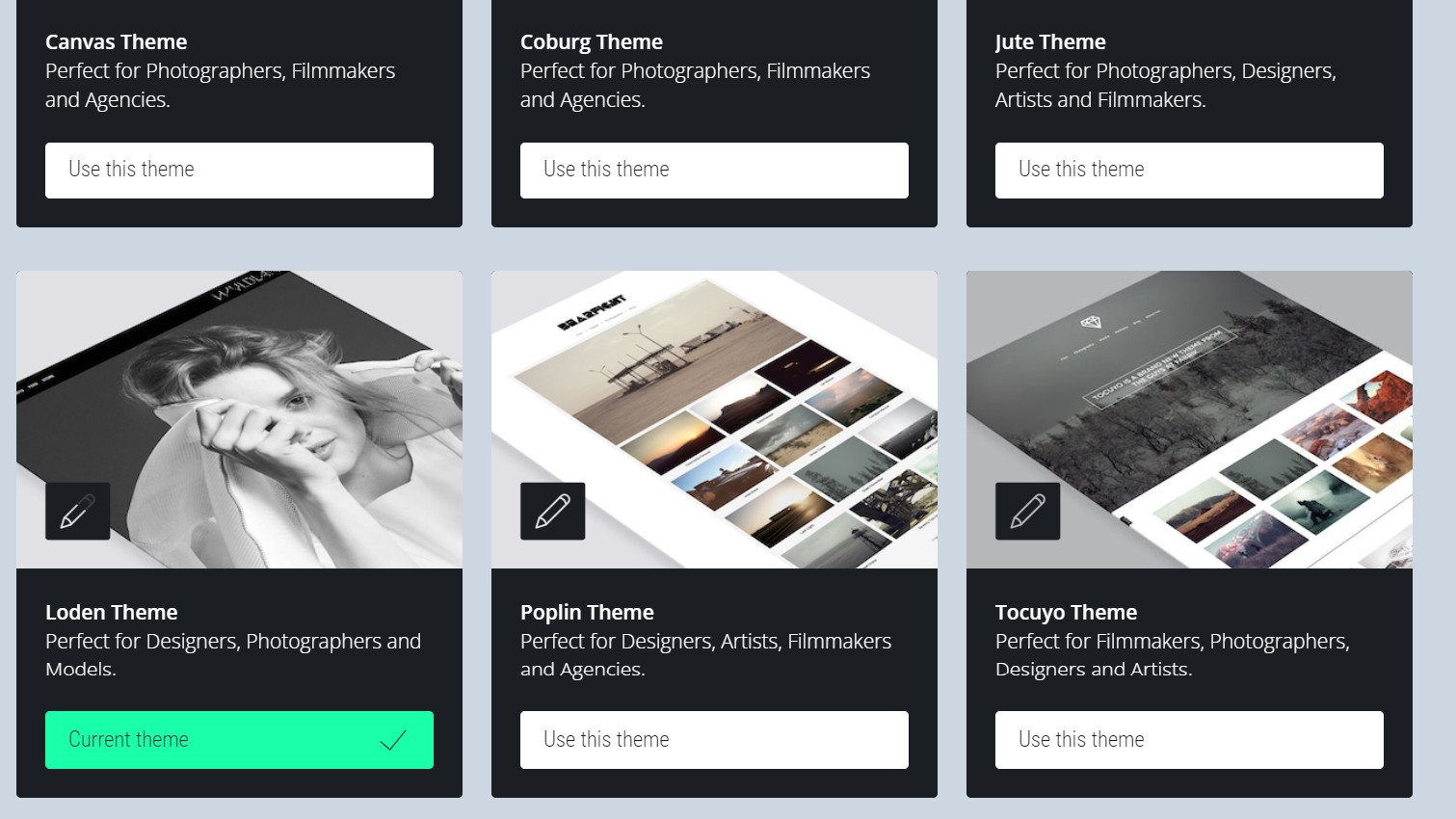
With the free trial and the lowest price tier (Personal), you get basic support. This means the team can help you understand the basics of how Fabrik works, such as how to customise your theme and layouts, connecting up a custom domain name or getting your Fabrik site live.
If, however, you want advanced support, such as tweaks to your site beyond what the system has in place, then you'll need the 'advanced support' that comes with the Professional and Unlimited tiers.
Fabrik review: Should I buy it?
Fabrik does one thing, and it does it very well. That thing is to make it easy for you to create a portfolio website, with the minimum of fuss. And if that's the specific thing you require, it's a good option at a quite reasonable price.

Yes, if you wanted to keep your costs down, then you could probably save a few pounds using a more generalist service like Wix or Weebly. But it would probably involve a lot more time and effort setting up your site, and that's time you could be spending working as a creative and earning money. So in most cases, it would be a false economy.
If you wanted to spend a little more, meanwhile, there's Squarespace. That service is also focused on portfolios, offers more attractive templates and is more customisable. But on the downside, it's a little fiddlier to use. So if you're not that bothered about the design of your site, and just want to get a site up and running fast, we'd still go for Fabrik.
Finally, if you're a photographer, you may also be tempted by discipline-specific features offered by Format and Smugmug. These include Lightroom integration, being able to disable right-click to stop image theft, mobile apps, and the ability to add watermarks, all of which are absent from Fabrik. Both also offer 24/7 support, which is going to be more helpful if you're not running on UK time.
Beyond these specific considerations, though, Fabrik has a lot to recommend it; most notably its super-easy interface. For that reason alone, we'd urge anyone looking to build a quick portfolio site to take advantage of the 14-day, no-commitment free trial, and give it a go.
Read more:

Thank you for reading 5 articles this month* Join now for unlimited access
Enjoy your first month for just £1 / $1 / €1
*Read 5 free articles per month without a subscription

Join now for unlimited access
Try first month for just £1 / $1 / €1
out of 10
If you have some strong and eye-catching images that you want to put together in a portfolio site, Fabrik is a great choice. You'll have to spend five minutes watching a tutorial video first, but once you've got your head around Fabrik's way of doing things, its interface becomes very easy to use. Top features include being able to password-protect projects, and automatic video uploads from YouTube and Vimeo.

Tom May is an award-winning journalist and editor specialising in design, photography and technology. Author of the Amazon #1 bestseller Great TED Talks: Creativity, published by Pavilion Books, Tom was previously editor of Professional Photography magazine, associate editor at Creative Bloq, and deputy editor at net magazine. Today, he is a regular contributor to Creative Bloq and its sister sites Digital Camera World, T3.com and Tech Radar. He also writes for Creative Boom and works on content marketing projects.
